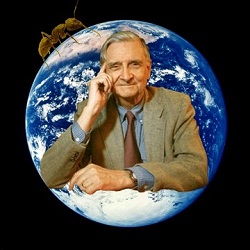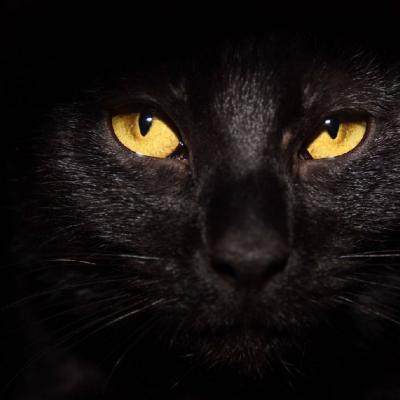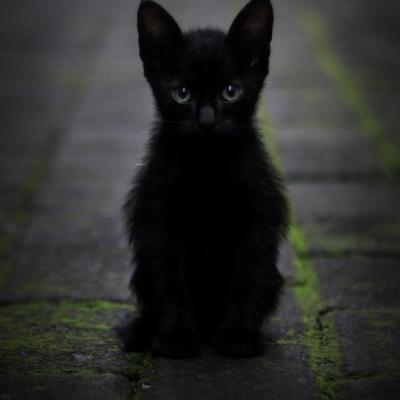
"Half of Earth's surface and seas must be dedicated to the conservation of nature, or humanity will have no future."
Unstanched haemorrhaging has only one end in all biological systems: death for an organism, extinction for a species. Researchers who study the trajectory of biodiversityloss are alarmed that, within the century, an exponentially rising extinction rate might easily wipe out most of the species still surviving at the present time.
The crucial factor in the life and death of species is the amount of suitable habitat left to them. When, for example, 90 per cent of the area is removed, the number that can persist sustainably will descend to about a half. Such is the actual condition of many of the most species-rich localities around the world, including Madagascar, the Mediterranean perimeter, parts of continental southwestern Asia, Polynesia, and many of the islands of the Philippines and the West Indies. If 10 per cent of the remaining natural habitat were then also removed – a team of lumbermen might do it in a month – most or all of the surviving resident species would disappear.
Today, every sovereign nation in the world has a protected-area system of some kind. All together the reserves number about 161,000 on land and 6,500 over marine waters. According to the World Database on Protected Areas, a joint project of the United Nations Environmental Program and the International Union for Conservation of Nature, they occupied by 2015 a little less than 15 per cent of Earth’s land area and 2.8 per cent of Earth’s ocean area. The coverage is increasing gradually. This trend is encouraging. To have reached the existing level is a tribute to those who have led and participated in the global conservation effort.
But is the level enough to halt the acceleration of species extinction? Unfortunately, it is in fact nowhere close to enough. The declining world of biodiversity cannot be saved by the piecemeal operations in current use alone. The extinction rate our behaviour is now imposing on the rest of life, and seems destined to continue, is more correctly viewed as the equivalent of a Chicxulub-sized asteroid strike played out over several human generations.
You may ask, doesn’t a rising population and per-capita consumption doom the Half-Earth prospect? In this aspect of its biology, humanity appears to have won a throw of the demographic dice. Its population growth has begun to decelerate autonomously, without pressure one way or the other from law or custom. In every country where women have gained some degree of social and financial independence, their average fertility has dropped by a corresponding amount through individual personal choice.
There won’t be an immediate drop in the total world population. An overshoot still exists due to the longevity of the more numerous offspring of earlier, more fertile generations. There also remain high-fertility countries, with an average of more than three surviving children born to each woman, thus higher than the 2.1 children per woman that yields zero population growth. Even as it decelerates toward zero growth, population will reach between 9.6 billion and 12.3 billion, up from the 7.2 billion existing in 2014. That is a heavy burden for an already overpopulated planet to bear, but unless women worldwide switch back from the negative population trend of fewer than 2.1 children per woman, a turn downward in the early 22nd century is inevitable.
And what of per-capita consumption? The footprint will evolve, not to claim more and more space, as you might at first suppose, but less. The reason lies in the evolution of the free market system, and the way it is increasingly shaped by high technology.
That process is already under way, albeit still far too slowly – with the end in sight in the 23rd century. We and the rest of life with us are in the middle of a bottleneck of rising population, shrinking resources, and disappearing species. As its stewards we need to think of our species as being in a race to save the living environment. The primary goal is to make it through the bottleneck to a better, less perilous existence while carrying through as much of the rest of life as possible. If global biodiversity is given space and security, most of the large fraction of species now endangered will regain sustainability on their own.
It is past time to broaden the discussion of the human future and connect it to the rest of life. The Silicon Valley dreamers of a digitised humanity have not done that, not yet. They have failed to give much thought at all to the biosphere. With the human condition changing so swiftly, we are losing or degrading to uselessness ever more quickly the millions of species that have run the world independently of us and free of cost.
The beautiful world our species inherited took the biosphere 3.8 billion years to build. The intricacy of its species we know only in part, and the way they work together to create a sustainable balance we have only recently begun to grasp. Like it or not, and prepared or not, we are the mind and stewards of the living world.
Source: An Essay by Edward O Wilson, a professor emeritus in entomology at Harvard.
Biography: Edward O Wilson
Why is Edward O Wilson globally respected?
Awards in Science
♦ National Medal of Science, 1976; ♦ Linnaean Heritage Award, Arizona State University (2010); ♦ EarthSky Science Communicator of the Year (2010); ♦ BRIT Award, Botanical Research Institute of Texas, 2009; ♦ Inaugural Edward O. Wilson Computer Technology Award, American Computer Museum, Bozeman, Montana. 2009; ♦ Tercentenary Silver Medal, Linnean Society of London, 2007; ♦ Addison Emery Verrill Medal, Peabody Museum of Natural History, Yale University, 2007; ♦ Distinguished Scientist Award, American Institute of Biology, 2007; ♦ TED Prize, 2006; ♦ George R. Stiblitz Computer and Communications Award, American Computer Museum, 2006; ♦ Lifetime Achievement Award, Institute of Biodiversity and Ecosystems Studies, University of Georgia, 2003; ♦ Distinguished Animal Behaviorist Award, Animal Behavior Society, 2002; ♦ Busk Medal, Royal Geographic Society, 2002; ♦ Gold Medal, New York Botanical Garden, 2002; ♦ Joseph Priestley Award, Dickinson College, 2000; ♦ King Faisal International Prize for Science, Saudi Arabia, 2000; ♦ Presidential Citation, American Psychological Association, 1999; ♦ First Recipient, Edward Osborne Wilson Naturalist Award, The American Society of Naturalists, 1997; ♦ Certificate of Distinction, Council of the XX International Congress of Entomology, 1996; ♦ David Ingalis Award for Excellence, Cleveland Museum of Natural History, 1995; ♦ Eminent Ecologist Award, Ecological Society of America, 1994; ♦ Henry Shaw Medal, Missouri Botanical Garden, 1993; ♦ International Prize for Biology, Government of Japan, 1993; ♦ Association of Systematics Collections Award, 1991; ♦ Crafoord Prize, Swedish Academy of Sciences, 1990; ♦ Prix du Institut de la Vie, Paris, 1990; ♦ Revelle Medal, San Diego Natural History Museum, 1990; ♦ Benjamin Dann Walsh Award, Illinois Academy of Sciences, Chicago, 1989; ♦ Founder’s Award, Field Museum, Chicago, 1989; ♦ Terrestrial Ecology Prize of the Ecology Institute, Germany, 1987; ♦ National Zoological Park Medal in Zoology and Conservation, 1987; ♦ L. O. Howard Distinguished Achievement Award, Entomological Society of America, 1985; ♦ Tyler Prize for Environmental Achievement, 1984; ♦ Leidy Medal, Academy of Natural Sciences, 1979; ♦ Archie F. Carr Medal, University of Florida,1979; ♦ Distinguished Service Award, American Institute of Biological Sciences, 1976; ♦ Founders’ Memorial Award, Entomological Society of America, 1973; ♦ Mercer Award, Ecological Society of America, 1971; ♦ The Newcombe-Cleveland Research Prize, American Association for the Advancement of Science, 1967
Literary Awards
♦ Pulitzer Prize, General Non-fiction for On Human Nature, 1979; ♦ Pulitzer Prize, General Non-fiction for The Ants, 1991; ♦ Green Prize for Sustainable Literature (fiction), Santa Monica Public Library (2011); ♦ Serono Prize for Literature and Science, Italy (2010); ♦ Heartland Prize for Fiction, Chicago Tribune, Anthill (2010); ♦ Julia Ward Howe Prize, Boston Authors Club for Phydole in the New World, 2003; ♦ Natural World Book Prize, Wild Life Trusts, UK, 2002; ♦ Lewis Thomas Prize, Science and Letters, Rockefeller University, 2001; ♦ International Award for Letters and Science, Nonino Foundation, Italy, 2000; ♦ Clarence Cason Award, University of Alabama, Nonfiction, 1999; ♦ Reading for the Environment, Deutsche Umweltstifrung for The Diversity of Life, 1992; ♦ Benjamin Franklin Award, Publishers Marketing Association for Naturalist, 1995; ♦ Los Angeles Times Book Prize for Naturalist, 1995; ♦ Science Book of the Year, German Journalist, Bild der Wissenschaft, for Journey to the Ants, 1995; ♦ Phi Beta Kappa Prize, Science for Journey to the Ants, 1995; ♦ John Hay Award, Orion Society,1995; ♦ AAAS Award for Public Understanding of Science and Technology, American Association for the Advancement of Science, 1995; ♦ Award for Increasing Public Understanding of Science, Council of Scientific Society Presidents, 1994; ♦ Distinguished Achievement Award, Educational Press Association of America, 1994; ♦ Sir Peter Kent Conservation Book Prize, Book Trust UK, for The Diversity of Life, 1994; ♦ Wildlife Society Book Award for The Diversity of Life, 1993; ♦ Hawkins Award, Outstanding Professional or Reference Work, American Publishers Association; ♦ for The Ants, 1991; ♦ Ingersoll Prize in Scholarly Letters, Richard Weaver Award, Rockford, Illinois, 1989; ♦ Book of the Year Award, Alabama Library Association, 1979
HONORARY DEGREES
♦ Albion College; ♦ Bates College; ♦ Bradford College; ♦ Cedar Crest College; ♦ Clark University; ♦ College of Wooster; ♦ Duke University; ♦ Firtchburg State College; ♦ Graduate Theological Foundation; ♦ Grinell College; ♦ Harvard University; ♦ Harvard University; ♦ Hofstra University of the South; ♦ Kenyon College; ♦ Kenyon College University ; ♦ Lawrence University; ♦ Macalaster College; ♦ Muhlenburg College; ♦ Ohio University; ♦ Oxford University; ♦ Pennsylvania State University; ♦ Ripon College; ♦ Rockefeller University; ♦ Simon Fraser University; ♦ State University of New York, Albany; ♦ University of Alabama; ♦ University of Connecticut; ♦ University of Madrid; ♦ University of Massachusetts; ♦ University of Montreal; ♦ University of Portland; ♦ University of Puget Sound; ♦ University of South Alabama; ♦ University of West Florida; ♦ University of Wurtzburg; ♦ Uppsala University; ♦ Williams College; ♦ Yale University
BOOKS BY E. O. WILSON
♦ The Theory of Island Biogeography with Robert MacArthur (1967).; ♦ A Primer of Population Biology with William H. Bossert (1971).; ♦ The Insect Societies (1971). American Scientist 100 Top Science Books of the Century.; ♦ Sociobiology: The New Synthesis (1975). Society Book Award; NY Public Library 200 Outstanding Books of the Century.; ♦ On Human Nature (1979). Pulitzer Prize.; ♦ Caste and Ecology in the Social Insects with George F. Oster (1978).; ♦ Genes, Mind, and Culture with Charles J. Lumsden (1981).; ♦ Promethean Fire with Charles Lumsden (1983).; ♦ Biophilia (1984).; ♦ The Ants with Bert Hölldobler (1990). Pulitzer Prize; Modern Library 100 Best Non-fiction Books Written in the 20th Century.; ♦ Success and Dominance in Ecosystems: The Case of the Social Insects (1990).; ♦ The Diversity of Life (1992). NY Public Library 200 Outstanding Books of the Century.; ♦ Journey to the Ants with Bert Hölldobler (1994).; ♦ Naturalist (1994). Los Angeles Times Book Award; New York Times Best 10 Books of 1994; Benjamin Franklin Award.; ♦ In Search of Nature (1996).; ♦ Consilience: The Unity of Knowledge (1998).; ♦ Biological Diversity: The Oldest Human Heritage (1999).; ♦ The Future of Life (2002). Wildlife Trusts Natural World Book Prize.; ♦ Pheidole in the New World (2003).; ♦ From So Simple a Beginning (2006).; ♦ Nature Revealed (2006).; ♦ The Creation (2006). Stevens Institute of Technology Science and Literature Prize.; ♦ The Superorganism with Bert Hölldobler (2008) Best biology book, Library Journal.; ♦ Ant Hill (2010) New York Times fiction best seller.; ♦ Kingdom of Ants: Jose Celestino Mutis and the Dawn of Natural History in the New World, with José María Gómez Durán (2010).; ♦ The Leafcutter Ants: Civilization by Instinct (2011).; ♦ The Social Conquest of Earth (2012).; ♦ Why We Are Here: Mobile and the Spirit of a Southern City, with Alex Harris (2012).; ♦ Letters to a Young Scientist (2013); 2014 Green Prize for Sustainable Literature in the category of Science, Santa Monica Public Library; ♦ A Window on Eternity: A Biologist’s Walk through Goronoga National Park (2014); ♦ The Meaning of Human Existence (2014)
E. O. Wilson is also the author of 433 peer-reviewed technical papers.
[The Buried Lead] Given a choice who to believe about significant global threats to Earth's ecosystem and sustainability, who do you want to believe? A world respected scientist or paid lobbyists sporting specious rhetoric for commercial or political special interests? For the "reasonable person," the choice is obvious.






